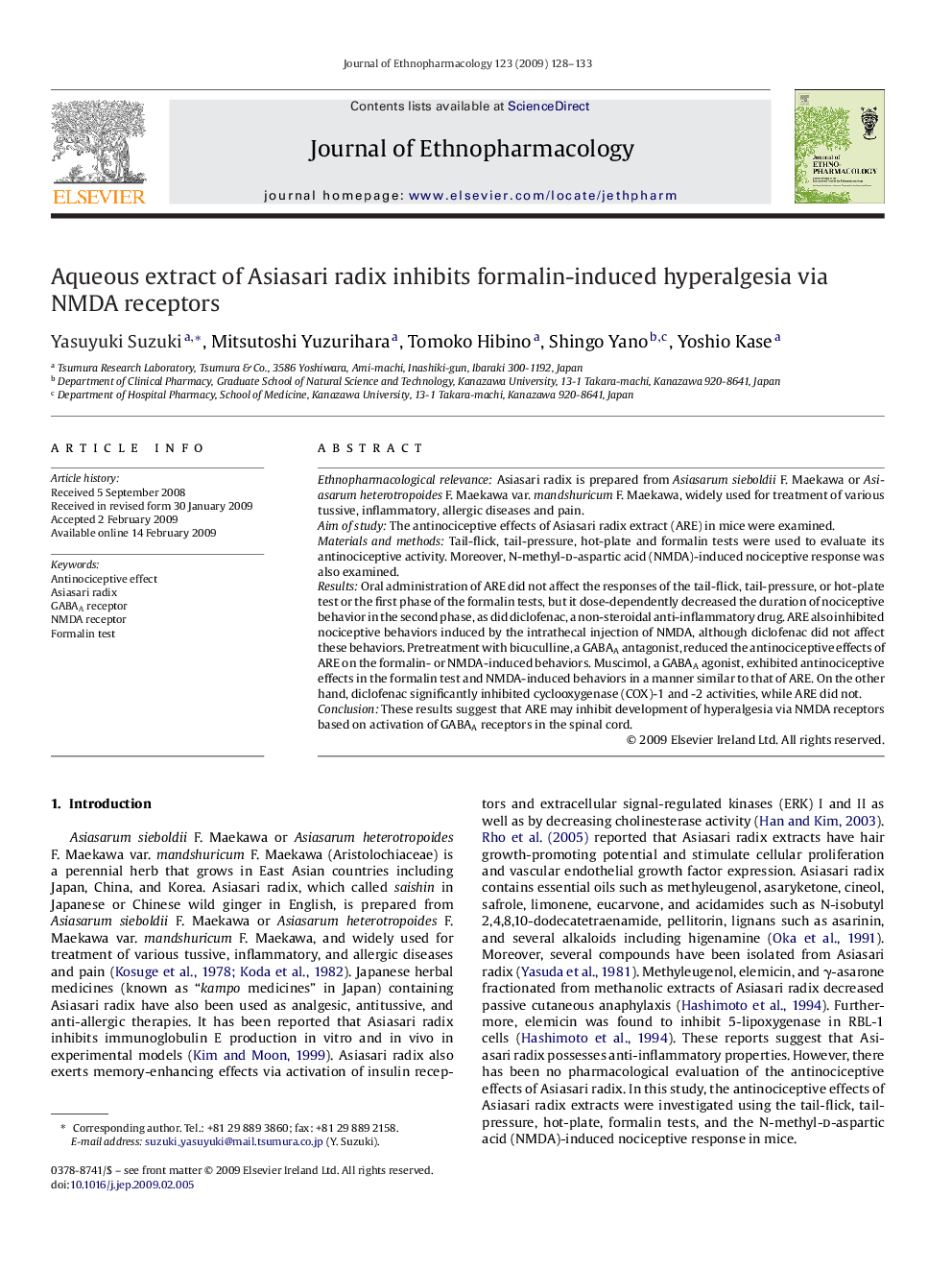| Article ID | Journal | Published Year | Pages | File Type |
|---|---|---|---|---|
| 2547574 | Journal of Ethnopharmacology | 2009 | 6 Pages |
Ethnopharmacological relevanceAsiasari radix is prepared from Asiasarum sieboldii F. Maekawa or Asiasarum heterotropoides F. Maekawa var. mandshuricum F. Maekawa, widely used for treatment of various tussive, inflammatory, allergic diseases and pain.Aim of studyThe antinociceptive effects of Asiasari radix extract (ARE) in mice were examined.Materials and methodsTail-flick, tail-pressure, hot-plate and formalin tests were used to evaluate its antinociceptive activity. Moreover, N-methyl-d-aspartic acid (NMDA)-induced nociceptive response was also examined.ResultsOral administration of ARE did not affect the responses of the tail-flick, tail-pressure, or hot-plate test or the first phase of the formalin tests, but it dose-dependently decreased the duration of nociceptive behavior in the second phase, as did diclofenac, a non-steroidal anti-inflammatory drug. ARE also inhibited nociceptive behaviors induced by the intrathecal injection of NMDA, although diclofenac did not affect these behaviors. Pretreatment with bicuculline, a GABAA antagonist, reduced the antinociceptive effects of ARE on the formalin- or NMDA-induced behaviors. Muscimol, a GABAA agonist, exhibited antinociceptive effects in the formalin test and NMDA-induced behaviors in a manner similar to that of ARE. On the other hand, diclofenac significantly inhibited cyclooxygenase (COX)-1 and -2 activities, while ARE did not.ConclusionThese results suggest that ARE may inhibit development of hyperalgesia via NMDA receptors based on activation of GABAA receptors in the spinal cord.
